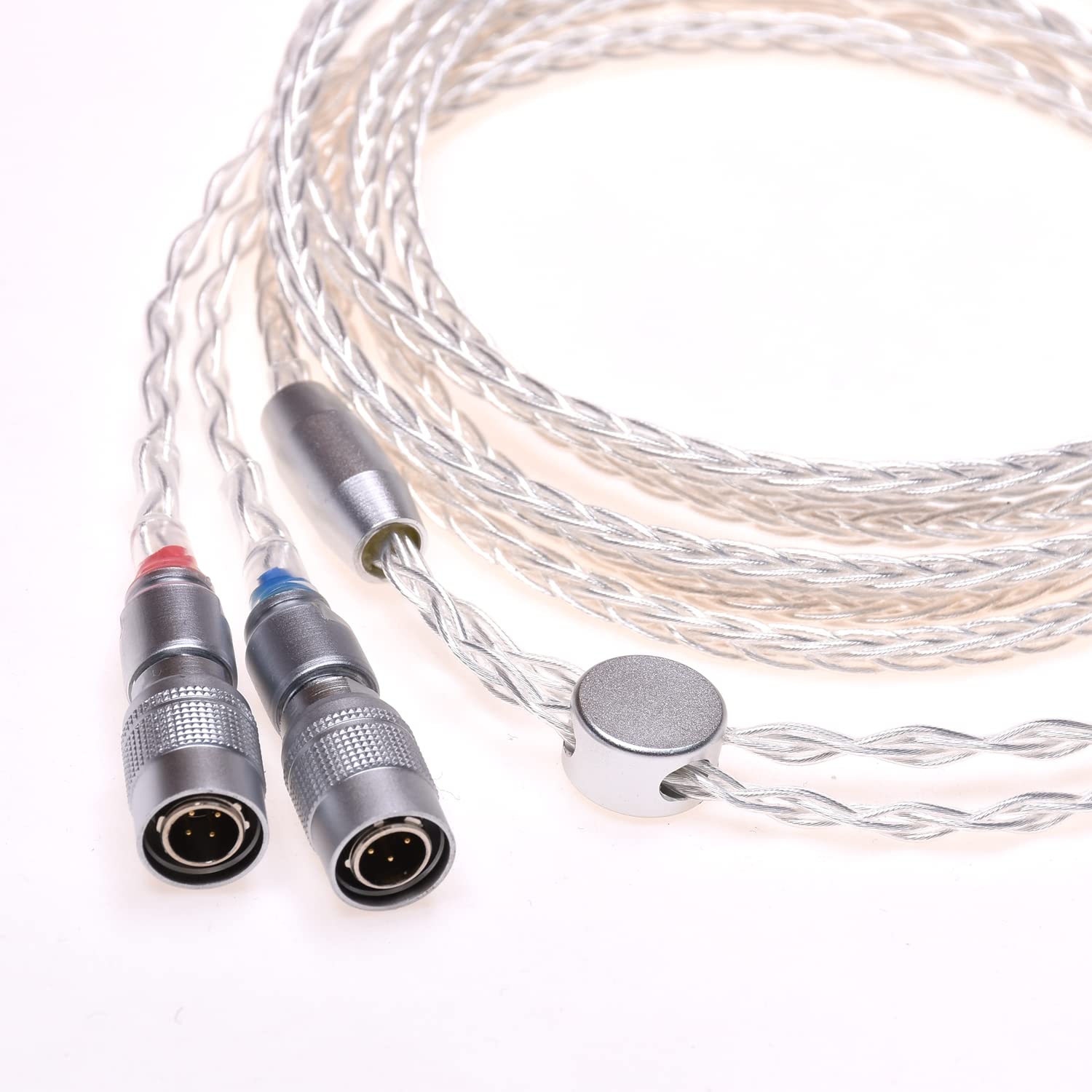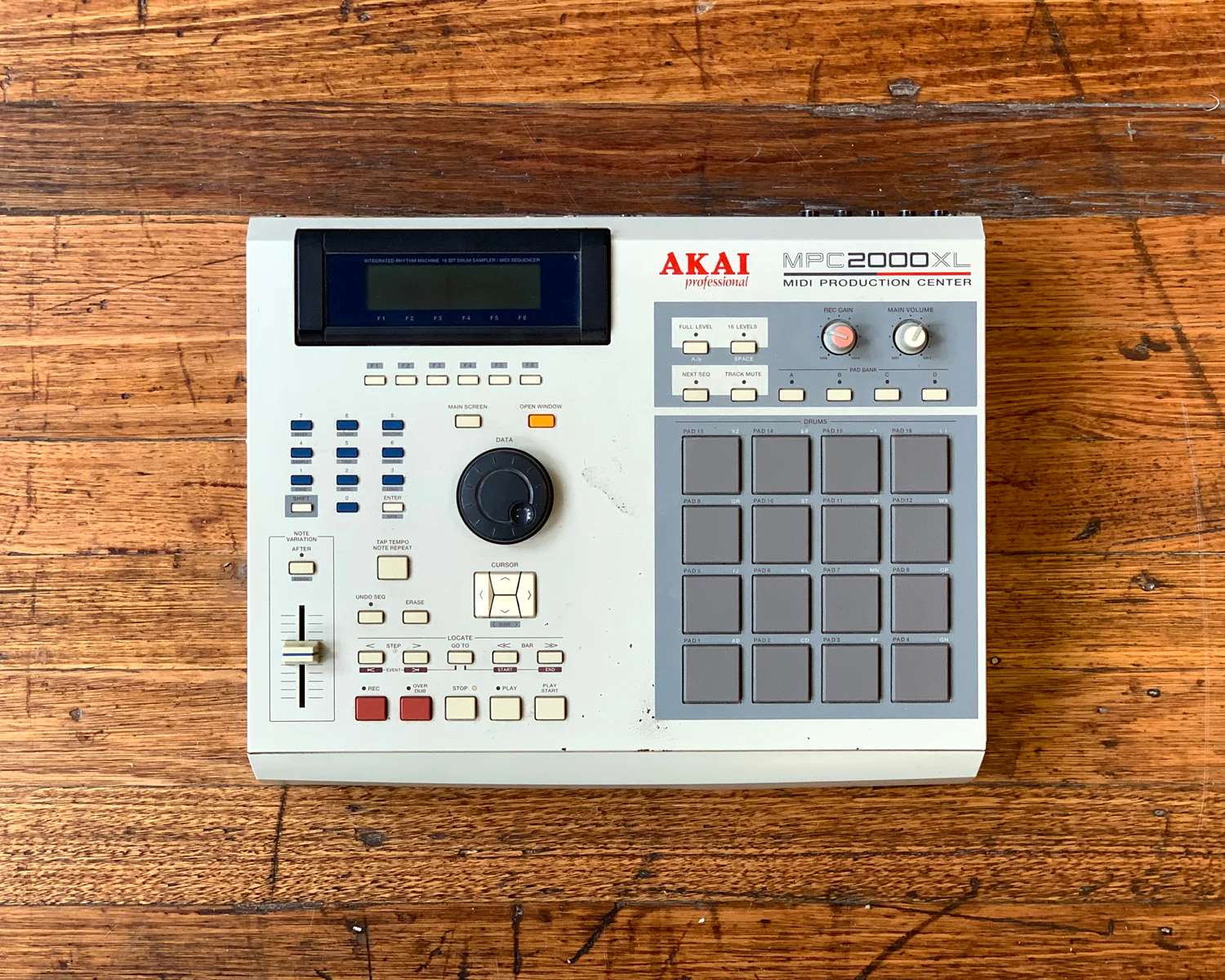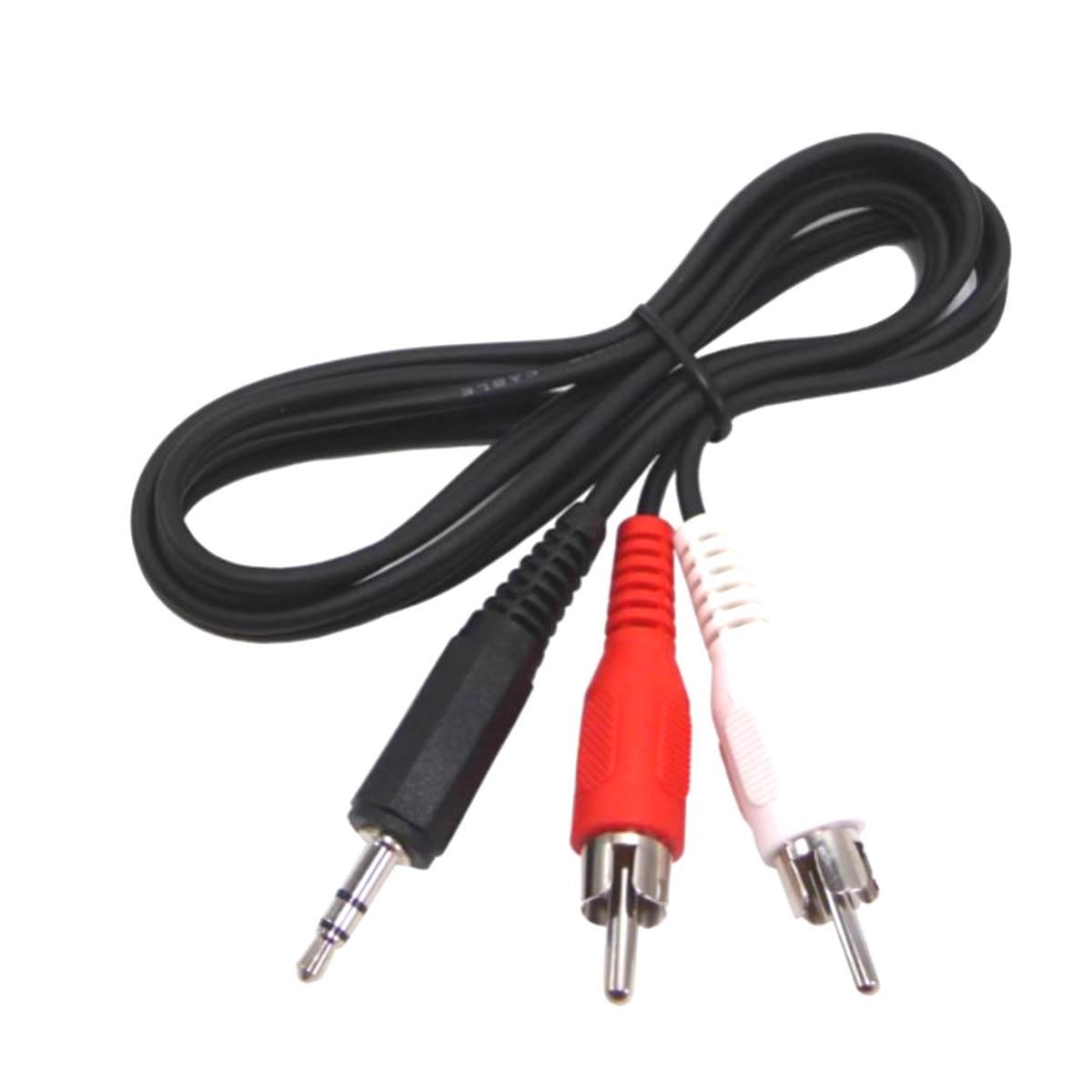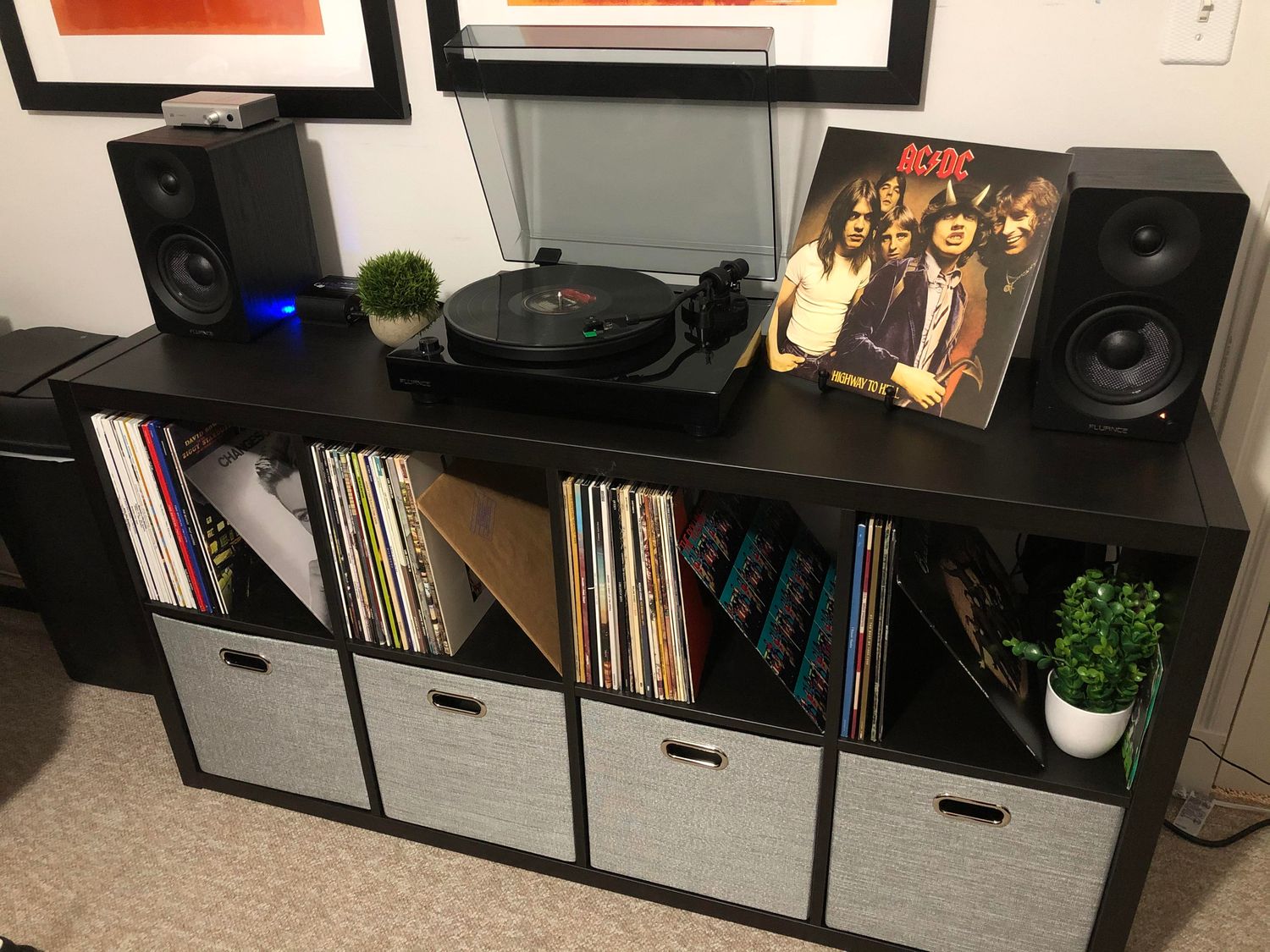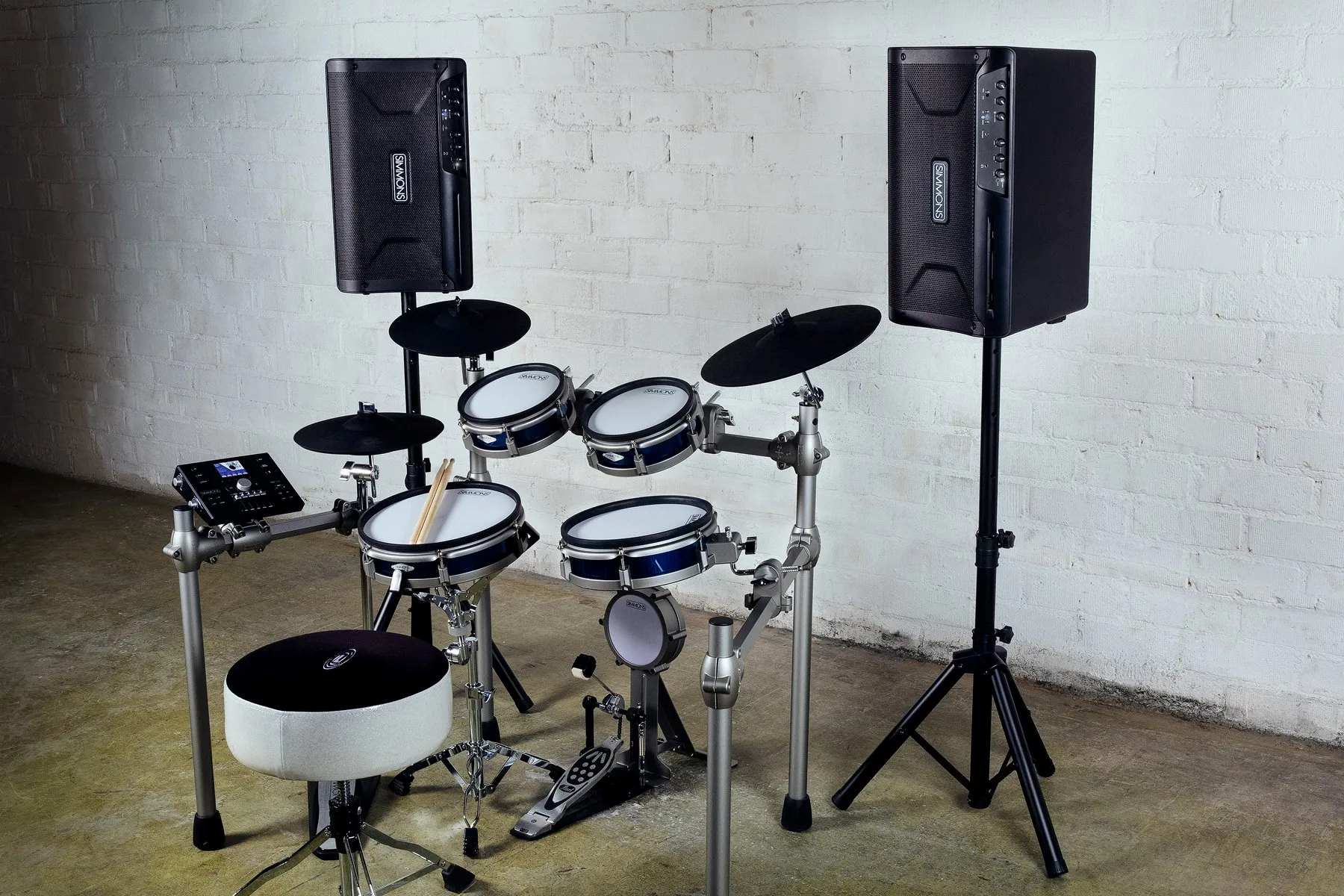Home>Production & Technology>Audio Cable>What Kind Of Audio Cable Do I Need For Echo Dot


Audio Cable
What Kind Of Audio Cable Do I Need For Echo Dot
Modified: January 22, 2024
Unsure of what audio cable to use with your Echo Dot? Discover the perfect audio cable for optimal sound quality and compatibility with your device.
(Many of the links in this article redirect to a specific reviewed product. Your purchase of these products through affiliate links helps to generate commission for AudioLover.com, at no extra cost. Learn more)
Table of Contents
Introduction
If you are the proud owner of an Echo Dot, you know that it’s a powerful and versatile device that can do everything from playing music to controlling smart home devices. But to fully enjoy all the features of your Echo Dot, you’ll need to connect it to an audio source. That’s where audio cables come into play.
Audio cables are essential for connecting your Echo Dot to external speakers, headphones, or other audio devices. They allow you to amplify the sound and enjoy a richer and more immersive audio experience. But with so many different types of audio cables available, how do you know which one is right for your Echo Dot?
In this article, we will explore the various types of audio cables that are compatible with the Echo Dot. We’ll discuss their features, advantages, and how they can enhance your audio setup. By understanding the different options available, you’ll be able to make an informed decision and choose the right audio cable for your specific needs.
Understanding the Echo Dot Audio Port
Before diving into the different types of audio cables, it’s important to understand the audio port on your Echo Dot. The Echo Dot is equipped with a 3.5mm audio output jack, also known as a headphone jack. This is the primary audio port that allows you to connect external audio devices to your Echo Dot.
The 3.5mm audio output jack is a universal port that is commonly found on audio devices such as smartphones, laptops, and tablets. It is a small round hole that accepts a 3.5mm audio plug, which is the standard size for audio cables.
The audio port on the Echo Dot is located at the back of the device, next to the power adapter port. It allows you to connect your Echo Dot to a wide range of audio devices, including speakers, headphones, soundbars, and audio receivers.
When choosing an audio cable for your Echo Dot, it’s important to ensure that it has a male 3.5mm audio plug, which will fit into the audio port on your Echo Dot. The other end of the cable will have a different type of connector depending on the audio device you are connecting to.
Now that we have a basic understanding of the audio port on the Echo Dot, let’s explore the different types of audio cables that you can use to enhance your audio experience with the Echo Dot.
Different Types of Audio Cables
When it comes to audio cables for the Echo Dot, there are a few different types to choose from. Each type of cable has its own specific features and advantages. Let’s take a closer look at some of the most common options:
-
3.5mm Auxiliary Cable:
The 3.5mm auxiliary cable, also known as a headphone cable or AUX cable, is the most commonly used audio cable for connecting the Echo Dot to external speakers or headphones. It has a male 3.5mm audio plug on both ends, allowing you to connect one end to the audio port on your Echo Dot and the other end to the audio input of your speakers or headphones. This cable is versatile and widely available.
-
RCA Cable:
The RCA cable is another popular option for connecting the Echo Dot to audio devices. It consists of two or three color-coded cables with RCA connectors on one end and a 3.5mm audio plug on the other end. The RCA connectors are usually red and white, and sometimes yellow for video. This type of cable is commonly used for connecting to older audio systems or for connecting the Echo Dot to a stereo receiver.
-
Optical Audio Cable:
The optical audio cable, also known as a TOSLINK cable, is a digital audio cable that uses optical fibers to transmit audio signals. It has a square-shaped connector with a flap that protects the delicate optical cable inside. This type of cable provides high-quality audio transmission and is commonly used to connect the Echo Dot to soundbars or home theater systems that support optical input.
-
HDMI Cable:
If you have an Echo Dot with a built-in HDMI port, you can use an HDMI cable to connect it directly to a TV or monitor with an HDMI input. This allows you to use your TV or monitor as a speaker system for your Echo Dot. HDMI cables transmit both audio and video signals, providing a convenient and all-in-one solution for connecting your Echo Dot to a display device.
-
Bluetooth Connection:
In addition to physical audio cables, you can also connect your Echo Dot to audio devices wirelessly using Bluetooth. The Echo Dot has built-in Bluetooth capabilities, allowing you to pair it with Bluetooth-enabled speakers or headphones. This provides a convenient and cable-free audio connection, perfect for portable or wireless setups.
These are just a few examples of the different types of audio cables you can use with your Echo Dot. The right choice will depend on your specific audio setup and the devices you want to connect to. Consider the features and compatibility of each cable type to determine which one will best suit your needs.
3.5mm Auxiliary Cable
The 3.5mm auxiliary cable, sometimes referred to as a headphone cable or AUX cable, is a versatile and commonly used audio cable that is compatible with the Echo Dot. It has a male 3.5mm audio plug on both ends, allowing you to connect your Echo Dot to external speakers, headphones, or other audio devices.
The 3.5mm auxiliary cable is widely available and comes in various lengths to accommodate different setups. It is a simple and straightforward solution for connecting your Echo Dot to audio devices that have a 3.5mm audio input. This type of cable is commonly used for connecting the Echo Dot to portable speakers, computer speakers, car stereos, and more.
To use the 3.5mm auxiliary cable, simply plug one end into the audio output port on your Echo Dot and the other end into the audio input of the desired audio device. Once connected, the audio output from your Echo Dot will be routed through the external speakers or headphones, providing a better audio experience.
One of the advantages of using a 3.5mm auxiliary cable is its universal compatibility. The 3.5mm audio port is a standard feature on most audio devices, making it easy to connect your Echo Dot to a wide range of speakers or headphones without the need for any additional adapters or converters.
Furthermore, using a 3.5mm auxiliary cable eliminates the need for wireless connectivity or additional power sources. It provides a reliable and stable wired connection, ensuring a consistent audio signal and minimizing any potential latency or interference issues.
Overall, the 3.5mm auxiliary cable is a convenient and cost-effective solution for connecting your Echo Dot to external speakers or headphones. Whether you want to amplify the sound for a party, enjoy a private listening experience, or simply enhance the audio quality, the 3.5mm auxiliary cable is a reliable choice that will meet your audio needs.
RCA Cable
The RCA cable is another popular audio cable option for connecting your Echo Dot to audio devices. It is particularly useful when connecting to older audio systems or devices that have RCA inputs. The RCA cable consists of two or three color-coded cables with RCA connectors on one end and a 3.5mm audio plug on the other end.
The RCA connectors are typically red and white, with the red connector carrying the right audio channel and the white connector carrying the left audio channel. Some RCA cables may also have a yellow connector for video, but for audio purposes, the red and white connectors are the ones you’ll need.
To use an RCA cable with your Echo Dot, simply plug the RCA connectors into the corresponding audio inputs on your audio device. The 3.5mm audio plug is then connected to the audio output port on your Echo Dot. This allows the audio signal from your Echo Dot to be transmitted to the speakers or audio system connected via the RCA cable.
The RCA cable is a great choice when connecting your Echo Dot to stereo receivers, amplifiers, or audio systems that have RCA inputs. It provides a reliable and high-quality analog audio connection. Additionally, the RCA cable is often used to connect the Echo Dot to older TVs or home theater systems that lack HDMI or optical inputs.
One advantage of using an RCA cable is its simplicity and wide availability. RCA cables can be found in various lengths and price ranges, making it easy to find one that suits your needs and budget. Furthermore, RCA cables are generally durable and provide a stable audio connection without the need for any additional power sources or converters.
It’s important to note that if you are connecting your Echo Dot to an audio device with RCA inputs, you may need to adjust the input settings on the audio device to ensure it is receiving the audio signal from the correct input source.
In summary, the RCA cable is a reliable and widely compatible option for connecting your Echo Dot to audio devices with RCA inputs. It offers a straightforward solution for enjoying your music or audio content through external speakers or home theater systems.
Optical Audio Cable
The optical audio cable, also known as a TOSLINK cable, is a digital audio cable that provides a high-quality audio connection between your Echo Dot and audio devices such as soundbars or home theater systems. It uses optical fibers to transmit digital audio signals, ensuring a clean and interference-free audio experience.
The optical audio cable has a square-shaped connector on each end, with a flap to protect the delicate optical cable inside. One end of the cable is connected to the optical audio output port on your Echo Dot, while the other end is connected to the corresponding optical audio input port on your audio device.
Using an optical audio cable offers several advantages. Firstly, it provides a completely digital audio connection, which eliminates any analog to digital conversions and preserves the original audio quality. This makes it an ideal choice for audio enthusiasts who want the best possible sound experience.
Secondly, the optical audio cable supports multi-channel audio formats such as Dolby Digital and DTS, allowing you to enjoy immersive surround sound when connected to a compatible audio system. This is especially beneficial for watching movies or playing games that have spatial audio elements.
Another advantage of using an optical audio cable is that it is not affected by electromagnetic interference, making it a reliable solution for maintaining audio quality over longer distances. Unlike analog audio cables, which can be susceptible to noise and distortion, the optical audio cable ensures a clean and consistent audio signal.
It’s important to note that not all audio devices have an optical audio input. Before purchasing an optical audio cable, make sure that your audio device supports optical audio input and that it is compatible with your Echo Dot.
In summary, the optical audio cable is a premium audio cable option for connecting your Echo Dot to soundbars, home theater systems, or any other audio device with optical audio input. It offers superior audio quality, supports multi-channel audio formats, and provides a reliable and interference-free audio connection.
HDMI Cable
If you have an Echo Dot with a built-in HDMI port, you can take advantage of an HDMI cable to connect it directly to a TV or monitor with an HDMI input. This allows you to not only transmit audio but also video signals, turning your TV or monitor into a display device for your Echo Dot.
The HDMI cable is a single cable solution that can carry both audio and video signals, eliminating the need for separate audio and video cables. It has a rectangular-shaped connector with multiple pins, which ensures a secure and high-speed connection.
To use an HDMI cable with your Echo Dot, simply plug one end of the HDMI cable into the HDMI output port on your Echo Dot and the other end into an available HDMI input port on your TV or monitor. Once connected, you can switch the input source on your TV or monitor to the corresponding HDMI input to view and hear the content from your Echo Dot.
When using an HDMI cable, you can enjoy high-quality audio and video output from your Echo Dot, especially if you have a TV or monitor with advanced display technologies such as 4K resolution or HDR. This is especially beneficial if you want to watch movies, stream videos, or play games on a larger screen with immersive sound.
In addition to the convenience of transmitting both audio and video signals through a single cable, HDMI cables also support other advanced features such as Audio Return Channel (ARC), which allows audio to be sent back from your TV to your Echo Dot or other audio devices for enhanced audio playback.
It’s worth noting that not all models of the Echo Dot have an HDMI port. Be sure to check your specific model to see if it supports HDMI connectivity.
In summary, an HDMI cable provides a convenient and all-in-one solution for connecting your Echo Dot to a TV or monitor. It allows for high-quality audio and video transmission, simplifies cable management, and opens up a world of entertainment possibilities on the big screen.
Bluetooth Connection
In addition to using physical audio cables, you can also connect your Echo Dot to audio devices wirelessly using Bluetooth. The Echo Dot has built-in Bluetooth capabilities, allowing you to pair it with Bluetooth-enabled speakers, headphones, or other audio devices.
Setting up a Bluetooth connection is easy. Simply activate the Bluetooth mode on your audio device, put your Echo Dot into pairing mode, and select the Echo Dot from the list of available devices on your audio device. Once paired, the Echo Dot will automatically connect to your audio device whenever it is in range, providing a convenient and wireless audio streaming experience.
One of the major advantages of using Bluetooth is the flexibility and freedom it offers. You can move around your space without being limited by cables, making it ideal for portable setups or situations where you need to be mobile while enjoying your audio content.
Bluetooth technology has also improved over the years, providing better audio quality with lower latency. While there may still be some slight delay compared to a wired connection, it is generally negligible and does not hinder the overall audio experience.
Another benefit of using Bluetooth is the ability to connect multiple devices simultaneously. This allows you to easily switch between different audio sources without the need to constantly unplug and replug cables.
It’s important to note that the range of a Bluetooth connection can vary and may be affected by factors such as obstacles or interference. Generally, you can expect a range of around 30 feet (10 meters) when there is a clear line of sight between the Echo Dot and the audio device. Keep this in mind when planning your audio setup.
Overall, Bluetooth offers a convenient and wireless solution for connecting your Echo Dot to audio devices. Whether you want to stream music, podcasts, or other audio content, Bluetooth connectivity provides the flexibility and freedom to enjoy your audio without the hassle of cables.
Choosing the Right Audio Cable for Your Echo Dot
When it comes to choosing the right audio cable for your Echo Dot, there are a few factors to consider. Understanding your specific audio setup and the capabilities of your audio devices will help you make an informed decision. Here are some key points to keep in mind:
- Compatibility: Ensure that the audio cable you choose is compatible with your Echo Dot and the audio device you want to connect it to. Check the ports and connectors available on both devices to determine the appropriate cable type.
- Audio Quality: Consider the audio quality you desire. If you want the best possible sound, consider using a digital connection such as an optical audio cable or HDMI cable. These cables provide superior audio quality compared to analog cables like 3.5mm auxiliary or RCA cables.
- Distance: If you need to connect your Echo Dot and audio device over a long distance, consider using an HDMI cable or an optical audio cable. These cables maintain audio quality over longer distances compared to analog cables, ensuring a reliable connection.
- Device Features: Take into account the features and inputs available on your audio device. For example, if your audio device has an HDMI or optical input, it may be beneficial to utilize those connections for better audio and video quality.
- Convenience: Consider the convenience and flexibility you need. If you prefer a wired connection, cables like the 3.5mm auxiliary or RCA cables are easy to use and widely available. If you prefer a wireless setup, Bluetooth connectivity is a convenient option.
Ultimately, the right audio cable for your Echo Dot will depend on your specific needs, preferences, and the capabilities of your audio devices. Consider the factors mentioned above and choose the cable that best suits your audio setup, whether it’s for better audio quality, convenient wireless connectivity, or compatibility with specific audio devices.
By selecting the right audio cable, you can enhance your audio experience with your Echo Dot, whether you’re enjoying music, watching movies, or simply using it as a voice assistant.
Conclusion
Choosing the right audio cable for your Echo Dot is essential to enhance your audio experience and make the most out of your device. Whether you’re looking to connect your Echo Dot to external speakers, headphones, or other audio devices, understanding the different types of audio cables available is crucial in making an informed decision.
We explored various types of audio cables, including the 3.5mm auxiliary cable, RCA cable, optical audio cable, HDMI cable, and Bluetooth connection. Each cable offers unique features and advantages, catering to different audio setups and preferences.
The 3.5mm auxiliary cable provides a simple and widely compatible solution, while the RCA cable is suitable for connecting to older audio systems. The optical audio cable and HDMI cable offer high-quality audio and video transmission, catering to more advanced setups. Bluetooth connectivity provides a wireless and convenient option for those who prefer flexibility and freedom of movement.
When choosing the right audio cable, consider factors like compatibility, audio quality, distance, device features, and convenience. These factors will help you make a decision based on your specific audio setup and preferences.
Ultimately, the choice of audio cable will depend on your needs and the capabilities of your audio devices. Whether you prioritize audio quality, ease of use, or wireless connectivity, there is an audio cable option that suits your requirements.
By selecting the appropriate audio cable, you can elevate your audio experience with your Echo Dot. Whether you’re enjoying music, podcasts, or movies, a well-chosen audio cable will ensure optimal sound quality and seamless connectivity with your external audio devices.
So go ahead, explore the different audio cable options, and choose the one that best suits your needs. Connect your Echo Dot and unlock a whole new level of audio enjoyment.

